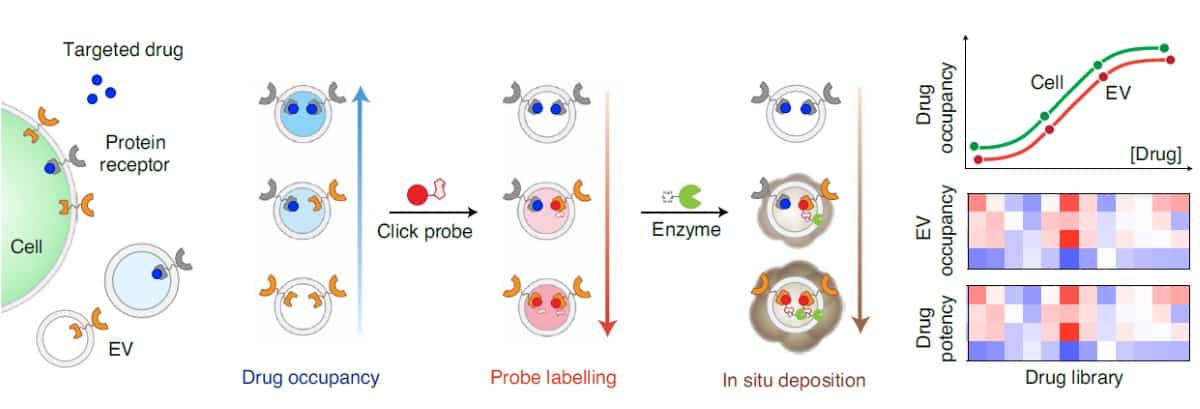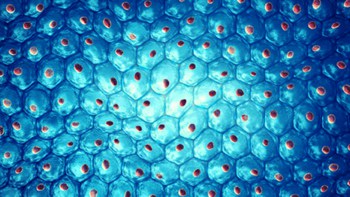
Catching cancer drugs in the act may seem complicated – but could soon become a lot simpler.
One of the three common methods of treating cancer is chemotherapy; this process uses active chemicals to destroy abnormal or tumour cells. The fundamental challenge with chemotherapy is that it interacts with all rapidly dividing cells in the body, and therefore can cause severe side effects.
To improve on the downside of chemotherapy and other targeted therapies, scientists at the Institute for Health Innovation & Technology, National University of Singapore, have developed a treatment monitoring technology that evaluates specific drug interactions with cancer cells. The researchers describe the technology, named extracellular vesicle monitoring of small-molecule occupancy and protein expression (ExoSCOPE), in Nature Nanotechnology.
The ExoSCOPE technology
ExoSCOPE relies on the tiny nanoparticle-like vesicles secreted by mammalian cells, particularly cancerous cells. These so-called extracellular vesicles (EVs) contain several components, including the ones responsible for drug interaction and targeting. The ExoSCOPE technology examines the abundance of EVs produced in the blood, using plasmonic sensors to evaluate how drugs or other agents bind with EVs through specific protein receptors. This helps the researchers understand and monitor how cancer cells interact with drugs at the molecular level.
The team designed specialized probes consisting of gold nanorings, which were used to identify the docking sites of the drugs with the cancer cells. Compared with a previously designed probe, these nanorings, which act as plasmonic resonators, offer enhanced signal detection by amplifying capture sites of molecular reactions with cancerous cells.
The new probe can amplify signals from EVs with low capacity for drug targeting and enables real-time monitoring of molecular reactions during ongoing cancer treatment. Plasmonic resonators generate electromagnetic hotspots, which maximize detection sensitivity. To increase signal detection, the team ensured that the molecular reactions occurred within these hotspots.
Clinical applications
The team analysed plasma samples from lung cancer patients using the plasmonic nanoring resonators to identify possible cancer markers. Compared with other EV analyses, the ExoSCOPE results showed the most accurate disease classification, with an area under curve of 0.982.
The researchers further examined blood samples from lung cancer patients undergoing targeted treatment with erlotinib, to determine time changes in drug occupancy in cancer associated EVs. They note that the ExoSCOPE platform was able to differentiate between treatment outcomes (responders and non-responders) after just a 24 hrs time-lapse, whereas conventional blood pharmacological analysis could not.
“This technology offers a promising approach for monitoring treatment outcomes in cancer cells,” says first author Sijun Pan.



